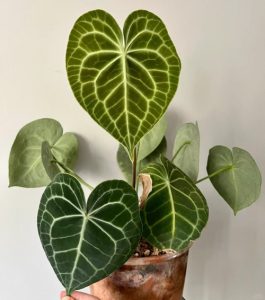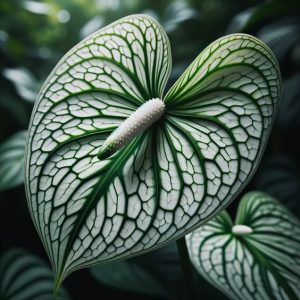- English
- Chinese
- French
- German
- Portuguese
- Spanish
- Russian
- Japanese
- Korean
- Arabic
- Irish
- Greek
- Turkish
- Italian
- Danish
- Romanian
- Indonesian
- Czech
- Afrikaans
- Swedish
- Polish
- Basque
- Catalan
- Esperanto
- Hindi
- Lao
- Albanian
- Amharic
- Armenian
- Azerbaijani
- Belarusian
- Bengali
- Bosnian
- Bulgarian
- Cebuano
- Chichewa
- Corsican
- Croatian
- Dutch
- Estonian
- Filipino
- Finnish
- Frisian
- Galician
- Georgian
- Gujarati
- Haitian
- Hausa
- Hawaiian
- Hebrew
- Hmong
- Hungarian
- Icelandic
- Javanese
- Kannada
- Kazakh
- Khmer
- Kurdish
- Kyrgyz
- Latin
- Latvian
- Lithuanian
- Luxembou..
- Macedonian
- Malagasy
- Malay
- Malayalam
- Maltese
- Maori
- Marathi
- Mongolian
- Burmese
- Nepali
- Norwegian
- Pashto
- Persian
- Punjabi
- Serbian
- Sesotho
- Sinhala
- Slovak
- Slovenian
- Somali
- Samoan
- Scots Gaelic
- Shona
- Sindhi
- Sundanese
- Swahili
- Tajik
- Tamil
- Telugu
- Thai
- Ukrainian
- Urdu
- Uzbek
- Vietnamese
- Welsh
- Xhosa
- Yiddish
- Yoruba
- Zulu
- Kinyarwanda
- Tatar
- Oriya
- Turkmen
- Uyghur

Site na ihe mkpuchi doro anya na ụdị pụrụ iche, anthurium abụrụla ụdị osisi ime ụlọ nke ọma. Ewezuga ịkwalite ebe gbaragburugburu, ya mara mma croson na-acha uhie uhie na akwụkwọ rọrọ nke ọma nwere nnukwu mkpa n'ọtụtụ mmepe na ọzụzụ nka.

Anthurium classium
Anthurium’s symbolic meaning in society
Central na Central na South America, ọkachasị na Colombia na Ecurium bụ ụdị doro anya na iche iche na-enye atụmatụ dị na mpaghara ahụ.
Ihe nnọchianya nke oke na ịhụnanya
Many civilizations see the crimson anthurium blooms as a sign of passion and love. Often used on Valentine’s Day, weddings and other events to honor love, anthurium is used to convey affection and passion throughout Latin America. Often presented as a gift to close friends or lovers, its vivid crimson hue represents strong camaraderie and loving sentiments.
Ihe ịrịba ama nke chi oma na oganihu
A na-ahụ Anthurium na mmepeanya dị iche iche dị ka ihe nnọchianya na-eju anya. A na-ahụ uhie na feng feng shui dị ka agba nke ike na chioma; A na-ekwu na Anthurium na-eweta ezigbo akụ na ụba na ụba. A na-ahọrọ Anthuriums maka ịchọ ọtụtụ ụlọ na azụmaahịa na ebumnuche nke iwepụta chi na ike dị mma.
Ihe ngosi nke ndu
Anthuriums’ form and hue are frequently seen as emblems of energy and health. Its brilliant blossoms and silky foliage reflect plenty of life and a good condition. Many societies utilize anthuriums to adorn medical facilities and health centers in order to convey wishes for health and blessings.
Iji anthuriums na ọrụ okike
Apart from its great symbolic connotations in society, anthuriums have special appeal in the realm of art. From painting to sculpture, from interior design to floral arrangement, from anthuriums’ creative manifestations are diverse and varied.
Jiri ihe atụ na eserese.
Because of their unusual forms and hues, anthuriums have evolved into the subject of many artists’ creations. Rich colors and textures for paintings come from their brilliant crimson flowers and silky foliage. Anthuriums, with their lovely blossoms and vibrant colors, are clearly the major body or background feature in many contemporary and conventional paintings. Particularly in flower drawings, anthuriums often show up due of their exquisite forms, which take front stage in the artwork.
Ntinye na ihe ọkpụkpụ
In sculpture and installation art, visually striking pieces are created using the form and color of anthurium. Artists create a variety of installation art, including floral sculptures, anthurium-themed exhibits, etc., using the form of anthurium. These pieces not only show great beauty but also the artist’s respect of life and love of the surroundings.
Jiri ihe eji eme ihe
Anthurium dịkwa nnọọ nnọọ mkpa maka imepụta ime ụlọ. Karịsịa na ụlọ na ọfịs dị n'etiti, Anthurium na-arụ ọrụ maka ime ihe na-achọsi ike n'ihi agba mara mma na ụdị mara mma. Site na ihe ndị ahụ na-acha akwụkwọ ndụ nke osisi, ọ bụghị naanị na-enye ike ime ụlọ na agba kamakwa na-eme ka gburugburu ya na-eme gburugburu ya. A na-ejikarị osisi a ma ama, anthurium nwere arịa dị mkpa na ihe ịchọ mma imepụta ihe dị mkpa ma sie ike.
Nhazi ifuru na imewe
Anthurium’s unusual form and color make it quite popular in floral design. Often combining anthurium with other flowers, florists create bouquets and flower baskets with great visual impact and layer count. Especially in flower arrangements for weddings, festivals, and other formal events, where the anthurium is usually employed to create a noble and beautiful ambiance, the smooth buds and erect leaves of the anthurium make it an essential element in flower arrangements.
Ngwa na ihe ịchọ mma
Furthermore very significant for festive decorations is anthurium. Particularly during holidays like Christmas and New Year’s, the crimson hue of the anthurium accentuates the festive mood and takes front stage in decorations. Many stores and public venues will also pick anthurium as the primary part of festive decorations as its vivid colors and unusual floral forms may provide a joyful and warm ambiance to the festive surroundings.
Nes na-eji anthurium na Society Socially
Anthurium na-emekwa ka a na-etolite n'ahịrị na-eto eto nke ichebe gburugburu ebe obibi na mmepe. Iji nye ihe ọhụụ na ụdị ihe ndị na-ahụ maka ọdịbendị, na ndị na-emepụta ihe na-eme nyocha iji gwakọta anthurium na teknụzụ dị ugbu a.
Art dijitalụ na ihe ngosi dị iche iche
Kọmputa nka na-ezo aka na mebere ihe osise na nrụnye kọmputa mepụtara site na foto nke anthurium. Iji mepụta ihe anya na-ahụ anya, ndị na-ese ihe na-egosi ifuru na akwụkwọ nke anthurium na eserese kọmputa na teknụzụ eziokwu na teknụzụ eziokwu. Ọ bụghị naanị ihe osise nke Anthurium na-eme ka ndị ọbịa na-eme ihe osise na ọkwa dị egwu.
Jiri na gburugburu ebe obibi
Anthurium achọpụtala ngwa ọhụrụ na gburugburu imewe gburugburu ebe nchekwa gburugburu ebe obibi maara nke ọma. Ndị na-emepụta ihe na-enyocha otu esi emepụta nkwakọ ngwaahịa na-emekọ ihe ọnụ na ngwongwo ifuru na ngwaahịa ndị eke na nke ebe obibi nke anthurium. Ọ bụghị naanị maka uru Anthurium bara dị ka ihe dị na ya kama ọ na-enyekwa aka chekwaa gburugburu.
Na-akwalite ọrụ na agụmakwụkwọ
Ihe ọzọ bara uru maka izi ihe na ọrụ ahịa bụ Anthurium. Anthurium bụ ngwá ọrụ nkuzi eji n'ọtụtụ ndị otu na ụlọ ọrụ agụmakwụkwọ maka klaasị na Botany, ichebe ihe nchebe, na ngosipụta okike. Site n'akwụkwọ ndị a, ndị na-ege ntị nwere ike ọ bụghị naanị ịghọtapụta usoro mmepe na uru ọdịbendị nke anthurium kamakwa usoro okike ya.

Abrium
Abrium is very significant in art and culture because of its special beauty and great symbolic value. Anthurium has shown its many uses and broad impact whether as a symbol of love and good fortune in traditional culture or as exhibiting its distinctive visual appeal in contemporary art and design. Innovative uses of anthuriums are also changing as people’s awareness of environmental preservation and sustainable development rises, thus sustaining fresh energy into art and culture.
Previous News
Akụkọ ihe mere eme na usoro omenala nke osisi agaveNext News
Gburugburu elu nke caladium


